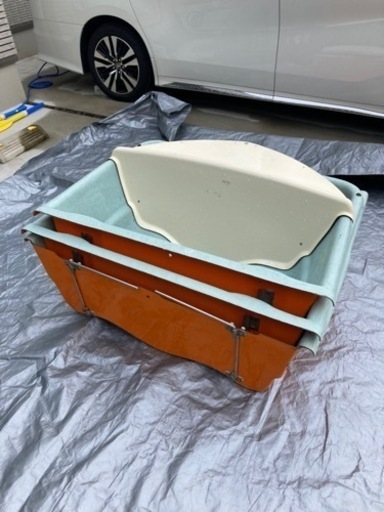
新入荷再入荷
ミニジープ
 タイムセール
タイムセール
終了まで
00
00
00
999円以上お買上げで送料無料(※)
999円以上お買上げで代引き手数料無料
999円以上お買上げで代引き手数料無料
通販と店舗では販売価格や税表示が異なる場合がございます。また店頭ではすでに品切れの場合もございます。予めご了承ください。
商品詳細情報
| 管理番号 | 新品 :98801207 | 発売日 | 2025/04/02 | 定価 | 222,500円 | 型番 | 98801207 | ||
|---|---|---|---|---|---|---|---|---|---|
| カテゴリ | |||||||||
ミニジープ
ミニジープリトルフォースです。エンジンの刻印は49ccですが,エンジンのパワー的に80ccくらいあると思います。前進三速,ニュートラル,バック付き。カスタム内容 キャブを京浜PC20に変更オイルクーラー,電動ファン,フロント8jリア10j 、ミラー変更,UNIフィル、バッテリー上がり防止でロケットスイッチ,タコメーター,油温計と油圧計は取付方法が難しく電原は引いていますが,配線はしていません。購入者様の方で,部品調達,配線接続お願いします。フロントホイールのpcdが違うpcdだった為,pcd110に穴あけて取り付けしてあります。ノーマルのタイヤホイール,タイヤはすり減っていますが,四本あります。ガレージ内保管なので状態は良いです。毎日エンジンかけて,月1オイル交換しています。当方購入してから2年になりますが,日々整備しながらカスタムして、大きなトラブルもなく,調子は良いと思います。たまに荒い運転をするとクラッチがギャーと泣くときがあります。今現在ナンバー登録済みなので,購入様が決まり次第,廃車手続きいたします。ある程度の整備スキルある方にオススメです。全く知識のない方は辞めたほうが良いです。陸送は対応していませんが,近場で有れば,当方が軽トラにて別途配送いたします。遠方の方はすみません。値下げ希望の方は購入希望の金額をご提示お願いします。大幅な値下げはできませんが、少しなら検討させて頂きます。

































